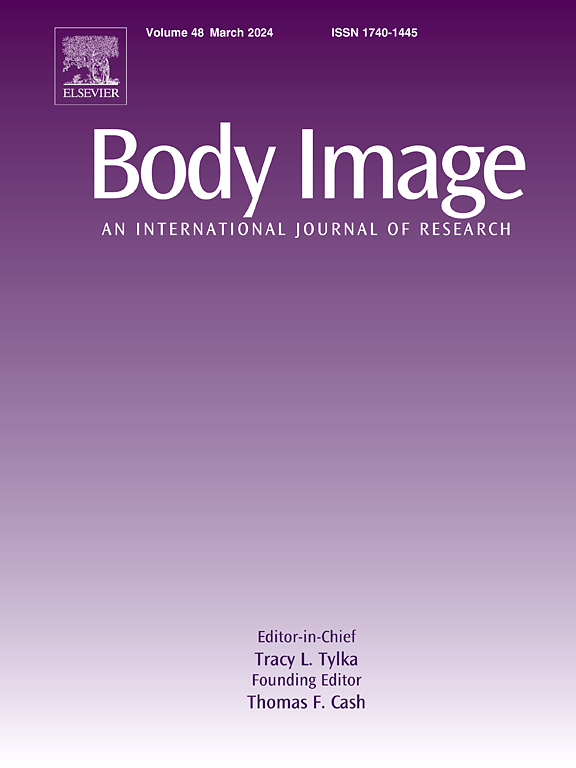比较不同身体活动方式下身体外观与健康自我意识情绪的关系:一项多部分研究
IF 5.4
1区 心理学
Q1 PSYCHIATRY
引用次数: 0
摘要
身体外观和健康自我意识情绪已被确定为有氧体育活动的先决条件。包括抗阻训练和统计统计外观和健身情绪的共同发生是必要的,以确定哪个情绪方面可能更有利于目标,以促进不同的体育活动。这项分为两部分的研究比较了年轻人的外表和健康自我意识情绪(羞耻、内疚、嫉妒、尴尬、真正的骄傲、傲慢的骄傲)和身体活动(剧烈、适度、轻微、抗拒)之间的关系。参与者在研究1 (N = 401名女性,法师± SD = 25.66 ±5.36 )和2 (N = 510,70.4 %的女性,法师± SD = 28.09 ±5.87 )完成验证措施使用路径模型和数据进行了分析。在相同的研究模型中,健康而非外貌情绪与身体活动显著相关。健身羞耻和内疚感与较低的身体活动相关(显著性b =−)。15至- 0.49),而健康、真实和傲慢的骄傲与较高的体育活动相关(b =。11 to.53)。不一致的联想是健康、尴尬和嫉妒。研究结果表明,个人层面的干预应针对健身相关情绪,并强调通过健身环境和内容产生的人际和系统层面的影响应避免助长健身羞耻感和内疚感,并培养健身自豪感。本文章由计算机程序翻译,如有差异,请以英文原文为准。
Comparing the associations between body appearance and fitness self-conscious emotions across physical activity modalities: A multi-part study
Body appearance and fitness self-conscious emotions have been identified as antecedents to aerobic physical activity. Including resistance training and statistically accounting for the co-occurrence of appearance and fitness emotions is essential for identifying which emotion facet may be more beneficial to target to facilitate different physical activities. This two-part study compared the associations among appearance and fitness self-conscious emotions (shame, guilt, envy, embarrassment, authentic pride, hubristic pride) and physical activity (strenuous, moderate, mild, resistance) among young adults. Participants in Study 1 (N = 401 women, Mage ± SD = 25.66 ± 5.36) and 2 (N = 510, 70.4 % women, Mage ± SD = 28.09 ± 5.87) completed validated measures and data were analyzed using Path models. Fitness but not appearance emotions were significantly related to physical activity when in the same model across studies. Fitness shame and guilt were associated with lower physical activity (significant b = −.15 to −.49) whereas fitness authentic and hubristic pride were associated with higher physical activity (b =.11 to.53). Inconsistent associations were noted for fitness embarrassment and envy. Findings suggest that person-level interventions should target fitness-related emotions and highlight that interpersonal and system-level influences via fitness environments and content should avoid fostering fitness shame and guilt and foster fitness pride.
求助全文
通过发布文献求助,成功后即可免费获取论文全文。
去求助
来源期刊

Body Image
Multiple-
CiteScore
8.70
自引率
28.80%
发文量
174
期刊介绍:
Body Image is an international, peer-reviewed journal that publishes high-quality, scientific articles on body image and human physical appearance. Body Image is a multi-faceted concept that refers to persons perceptions and attitudes about their own body, particularly but not exclusively its appearance. The journal invites contributions from a broad range of disciplines-psychological science, other social and behavioral sciences, and medical and health sciences. The journal publishes original research articles, brief research reports, theoretical and review papers, and science-based practitioner reports of interest. Dissertation abstracts are also published online, and the journal gives an annual award for the best doctoral dissertation in this field.
 求助内容:
求助内容: 应助结果提醒方式:
应助结果提醒方式:


